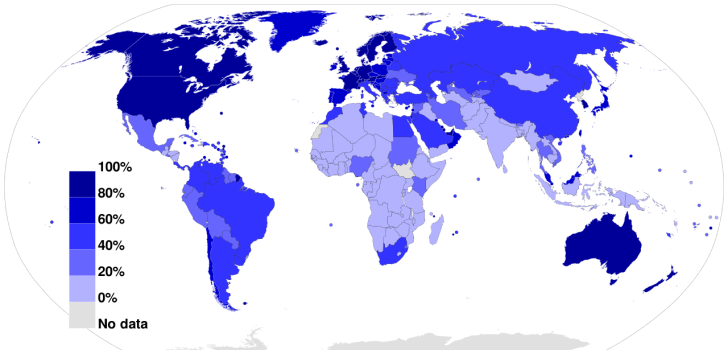A new UN report shows that in 2015 nearly half of the global population will be using the internet. The survery, conducted by The International Telecommunication Union (ITU), a United Nations body, estimates that 3.2 billion people will be online this year while the world’s population currently stands at 7.2 billion.
But the action isn’t actually in developed countries like the United States or Europe – 2 billion of those internet users will be from developing countries such as India, Vietnam and Indonesia.
Yet a group of nations described as “least developed countries” by the United Nations, with a combined population of 940 million, will see very little internet use. Just 89 million will be in countries such as Somalia and Nepal.
All told, this year will see more than 7 billion mobile device subscriptions, the ITU said, reflecting people owning multiple devices such as phones, tablets, phablets and even connected televisions.
About 78 percent of the U.S. and Europe already use mobile broadband, and 69% of the world has 3G coverage yet only 29% of rural areas are served. Sparse populations lead to high infrastructure investment per person, which reduces the attractiveness of such investments by internet service providers.
At the bottom of the heap? Africa, which lags behind with just 17.4% mobile broadband penetration, despite skipping entirely the wired phone generation and going straight to mobile devices.
The study focused on the growth of the Information and Communication Technology (ICT) sector over 15 years.
In 2000 there were just 400 million internet users worldwide, fully one eighth of the current figure.
“Over the past 15 years the ICT revolution has driven global development in an unprecedented way,” said Brahima Sanou, director of the ITU telecommunication development bureau.
“ICTs will play an even more significant role in the post 2015 development agenda and in achieving future sustainable development goals as the world moves faster and faster towards a digital society.”
As the Internet of Things unfolds, where toasters, microwaves and refrigerators come online, the number of devices connected to the internet is expected to climb exponentially.
In an increasingly connected world, the number of devices is going to vastly outstrip the number of people connected.
Stay Connected